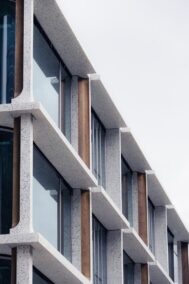The Influence of Cultural Shifts on Architectural Design
Architectural evolution is a fascinating journey through time, where each era leaves its distinct mark on the built environment. Renowned architect Ludwig Mies van der Rohe eloquently captured this essence by emphasizing that every architectural design is bound to its time and manifests through the materials of its age. This profound insight underscores the dynamic relationship between architectural innovation, societal needs, and the intrinsic qualities of materials.
Architecture serves as a mirror reflecting the cultural values, aspirations, and technological advancements of society. From the towering pyramids of ancient Egypt to the sustainable skyscrapers of the 21st century, architectural design evolves in response to changing societal needs and preferences. Cultural shifts, such as the rise of urbanization, globalization, and environmental consciousness, profoundly shape architectural trends, driving innovation and pushing boundaries.
Functionality as the Guiding Principle of Architectural Design
Functionality lies at the heart of architectural design, guiding architects in their quest to create spaces that are not only visually striking but also practical and user-friendly. Whether designing residential homes, commercial complexes, or cultural landmarks, architects prioritize functionality to ensure that buildings meet the needs of their occupants effectively. This emphasis on functionality extends beyond mere utility to encompass factors such as accessibility, comfort, and adaptability, enhancing the overall quality of life for users.
Embracing Innovation while Preserving Heritage
While embracing innovation and technological advancements, it is essential to preserve and celebrate architectural heritage for future generations. Historic buildings and landmarks serve as tangible links to the past, offering insights into the cultural, social, and architectural legacy of bygone eras. By striking a balance between innovation and preservation, architects can honor the craftsmanship of the past while embracing the challenges and opportunities of the future, ensuring that architectural evolution continues to enrich our lives and inspire future generations.
Navigating Complexity: The Future of Architectural Design
As we navigate the complexities of the modern world, the future of architectural design lies in embracing interdisciplinary collaboration, sustainable practices, and innovative technologies. Architects are increasingly adopting a holistic approach that integrates environmental considerations, social dynamics, and technological advancements into their design processes. By leveraging these diverse perspectives and resources, architects can shape a more resilient, inclusive, and sustainable built environment that meets the evolving needs of society.
Fostering Creativity and Collaboration
Creativity thrives in collaborative environments where diverse perspectives and ideas converge to inspire innovation. Architectural design is no exception, with architects often collaborating with engineers, urban planners, and stakeholders to bring visionary projects to life. By fostering a culture of creativity, open-mindedness, and collaboration, architects can unlock new possibilities and address complex challenges, paving the way for a more vibrant and dynamic architectural landscape.
Empowering Communities through Design
Architecture has the power to transform communities, enhance quality of life, and foster social cohesion. By actively engaging with local communities, architects can ensure that their designs reflect the unique needs, aspirations, and cultural identities of the people they serve. From designing sustainable housing solutions to revitalizing urban spaces, architects play a vital role in shaping environments that promote equity, inclusivity, and well-being for all.
Adapting to Technological Advancements in Architecture
Technological advancements have revolutionized the field of architecture, offering architects new tools and techniques to push the boundaries of design. From computer-aided design (CAD) software to parametric modeling and virtual reality simulations, architects have access to a wide array of digital tools that streamline the design process and enhance collaboration. These technologies enable architects to visualize concepts in 3D, analyze structural integrity, and optimize building performance with unprecedented precision, ultimately leading to more efficient and sustainable designs.
#ArchitecturalInnovation #SustainableDesign #FunctionalSpaces #PreservingHeritage























